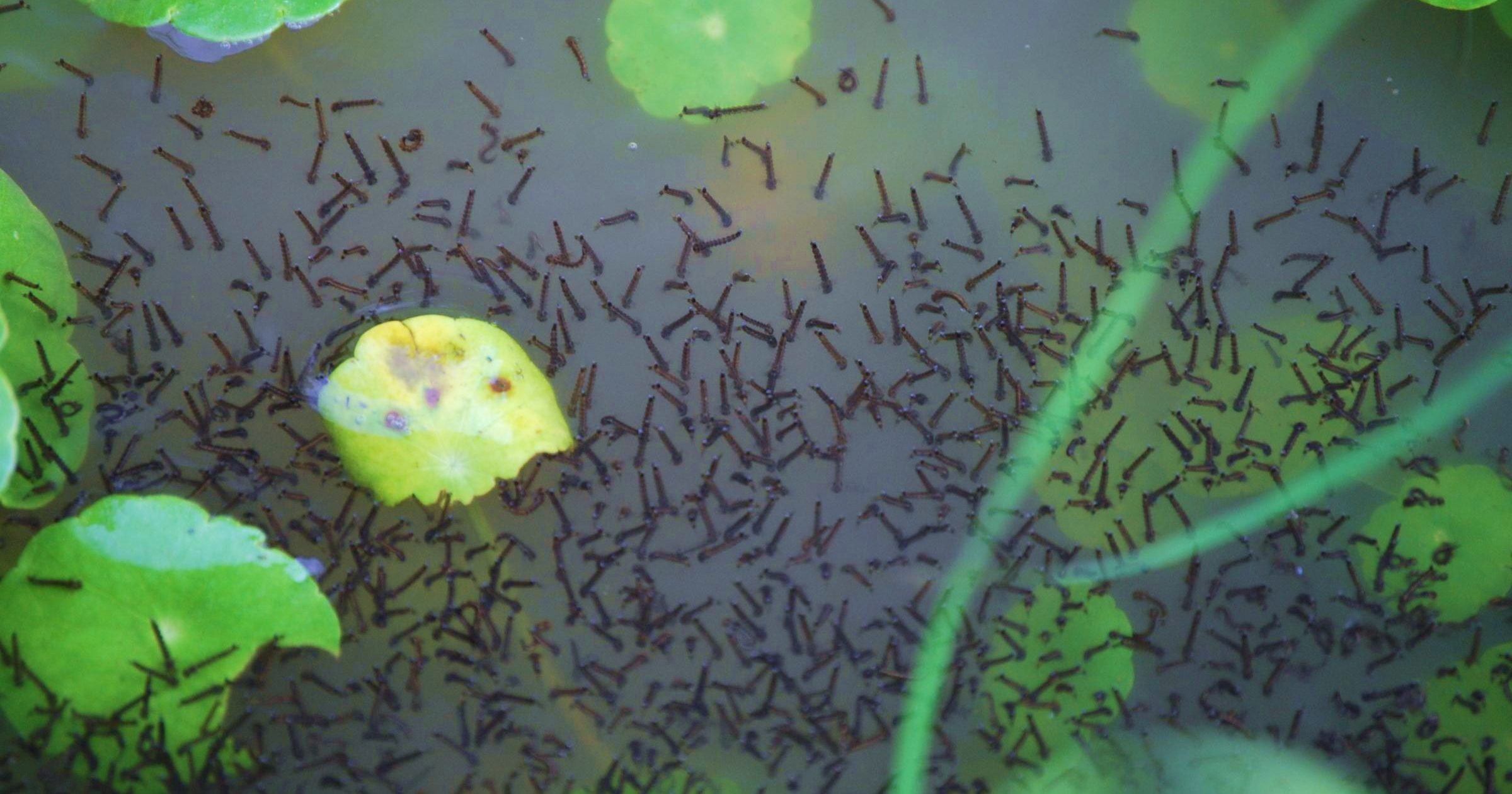We have much more to do and your continued support is needed now more than ever.
Innovations in Mosquito Control
Part 2: Copepod Biocontrol

While we enjoy sunshine and vacations, it may seem that mosquitoes serve no other purpose than to ruin our summer fun. While that is not true, mosquitoes can be vectors for harmful viruses, including Dengue, Zika, and West Nile Virus—even in the United States, and controlling mosquito populations is a matter of public health.
Historically, we have tried to solve the mosquito problem with heavy use of synthetic chemical pesticides which have been proven to be highly toxic to other insects, including important pollinators, like bees. Fortunately, mounting pressure from environmentally-minded citizens has inspired scientists to investigate innovative solutions to the problem of mosquito control in recent years.
From nanotechnology to predator biocontrol to genetic solutions, scientists have made incredible strides in effective, environmentally-friendly mosquito population control methods. In this three-part blog series, we’ll explore a few exciting avenues of research currently under investigation.
Next in our series is a promising new biocontrol.
Cyclopoid copepods
One strange but effective new method of mosquito control comes from tiny, unassuming aquatic organisms called copepods. They are zooplanktonic crustaceans with big appetites, and although most species only eat algae or dead plant matter, some prefer to feast on mosquito larvae developing in the water.
Cultivating these tiny mosquito-eaters, called cyclopoid copepods, has proved more effective for practical, large-scale mosquito control than any other invertebrate predator. The most effective species can kill more than 40 mosquito larvae per copepod, per day—and copepod colonies are typically several thousand strong.
What’s even better, cyclopoid copepods especially love to eat the larvae of Aedes mosquito species, such as the invasive tiger mosquito, which can carry Dengue fever, Zika virus, and more across the southern United States. Healthy copepod populations typically reduce local Aedes mosquito populations by 99-100%.
Using natural predators to manage pest populations is called biocontrol. Copepod biocontrol is most often tested in rice paddies, both in Vietnam and in California, but may have the potential for use elsewhere. Mass cultivation of copepods is extraordinarily simple and inexpensive, and if managed effectively, can completely eliminate local mosquito populations.
Backyard Copepods
Fortunately for the rest of us, natural populations of copepods are near-ubiquitous. They can be found in almost every natural—and many man-made—outdoor body of water, including ponds, pools, lakes, rivers, drainages, and even small puddles and blocked gutters. They are able to populate these places because, being so small, they can ride the flow of runoff water into new areas and may even be transported on wet vegetation or animals.
Natural garden ponds very likely already support a population of native copepods that will kill mosquito larvae developing in the water. However, filtered or regularly-cleaned ponds may not sustain copepods. You can encourage healthy copepods in your own garden pond by not keeping it spotlessly “clean” and allowing leaf litter and detritus to remain in the water, as these give copepods shelter from their own predators.
This is one example of many exciting advancements in technology that have allowed scientists to explore methods of mosquito control that are not only more effective than past methods, but reduce the negative environmental impact of human health management. Next, take a look at recent, revolutionary advancements in the use of genetic engineering for mosquito control.
In this series
- Part 1: Essential Oil Sprays and Nanotechnology
- Part 2: Copepod Biocontrol
- Part 3: Genetic Control of Mosquitoes





















